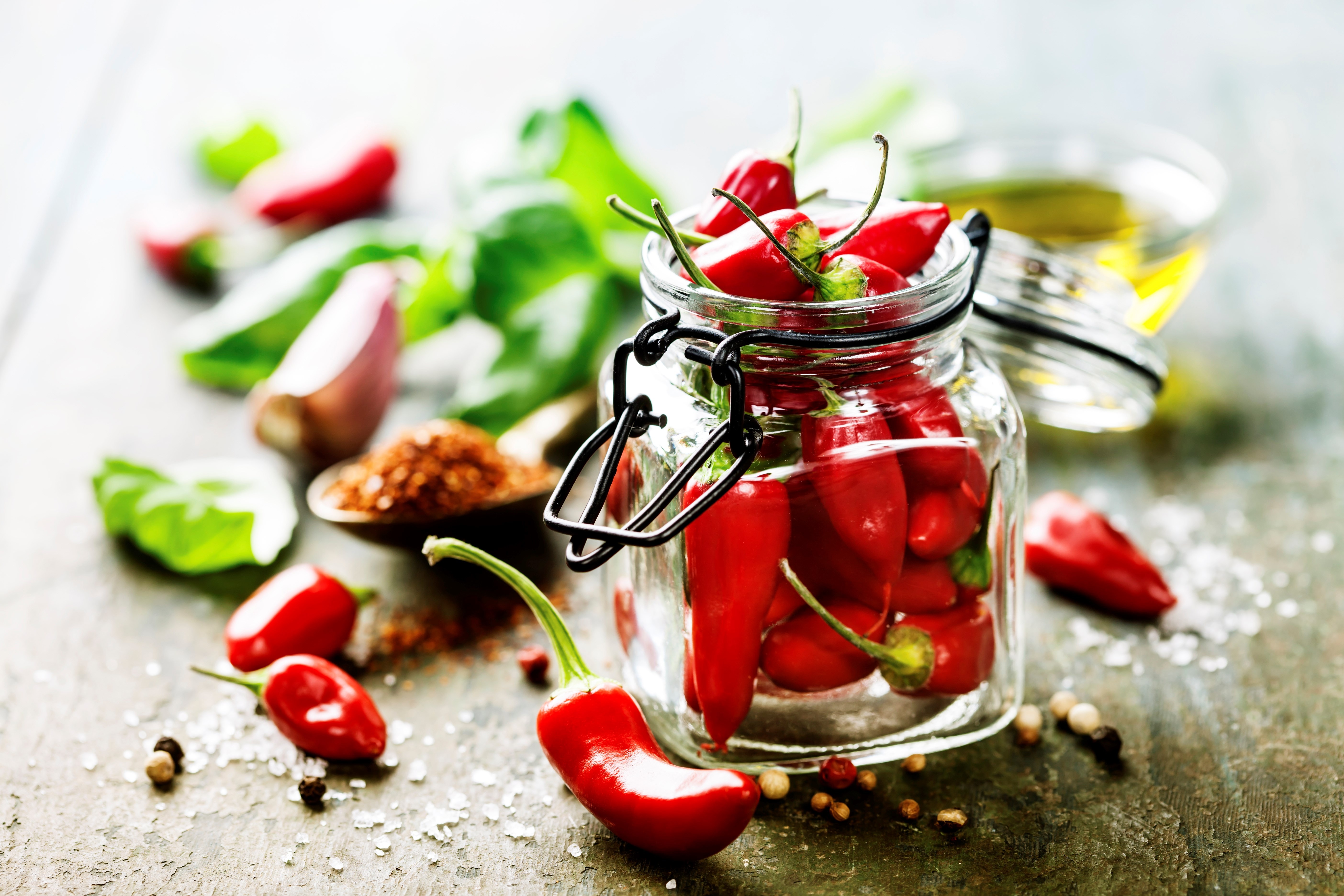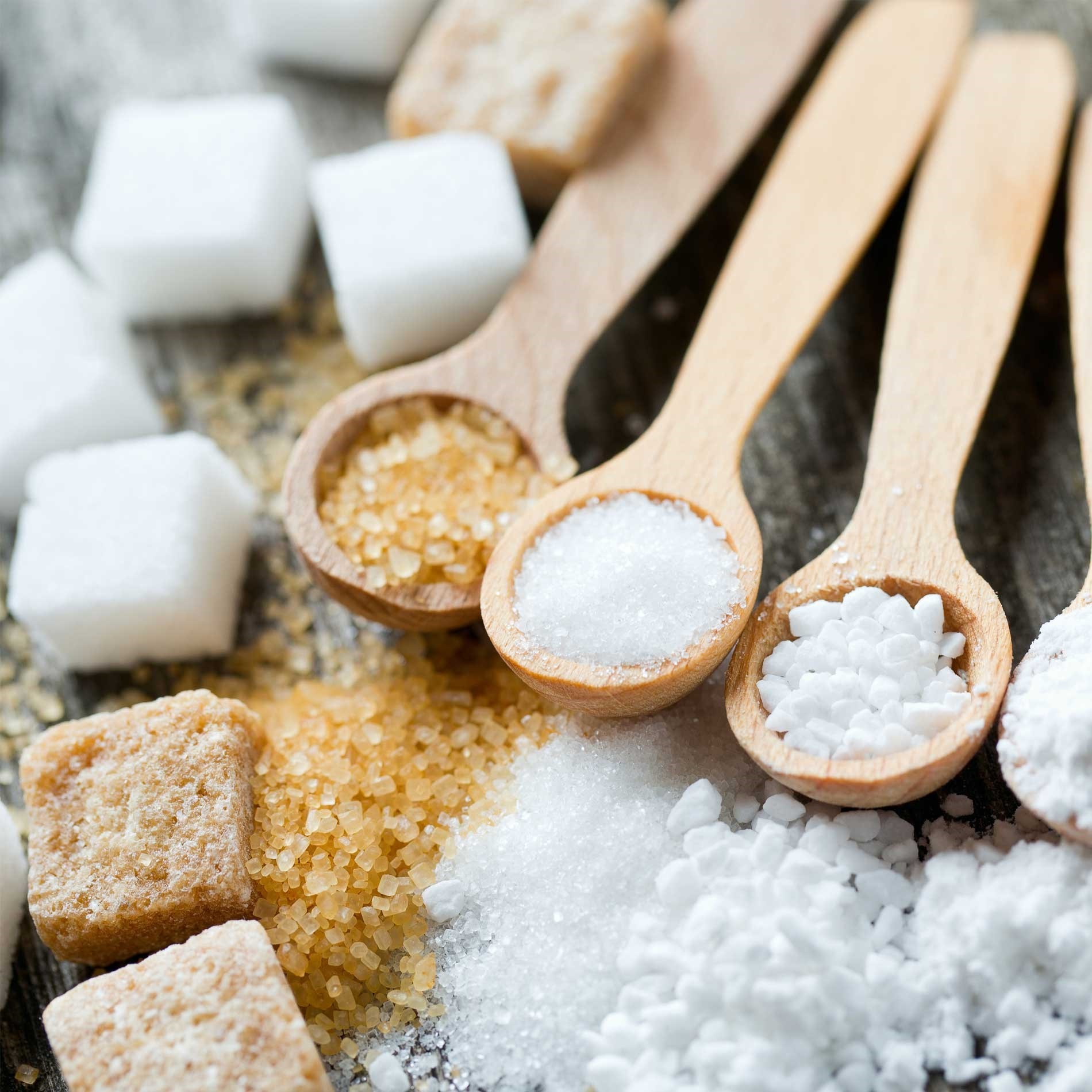Could Probiotics Help with Gastritis and Acid Reflux?
Acid reflux is a common western health issue. Drinking antacid out of the bottle isn't an entirely unusual sight! This can indeed give temporary relief but doesn't always solve the cause of this problem. So what can help with acid reflux? Probiotics seem to be becoming a popular approach in the fight against acid reflux. But why would probiotics help with this problem, known otherwise as heartburn?
Read on to find out more about the best probiotics for acid reflux or gastritis:
- Which are the best probiotics for acid reflux and gastritis?
- What is the cause of acid reflux?
- What is the difference between gastritis, H. pylori and acid reflux?
- How might probiotics help with acid reflux and gastritis?
- Best probiotics for H. pylori

Which are the best probiotics for acid reflux and gastritis?
In summary, the best probiotics for acid reflux will vary because different probiotic strains are suited to different people depending on the underlying cause. For example, specific strains have been shown to be particularly helpful for dysbiosis, whereas some are more suited for pregnancy, and some are best for H. pylori. If this is the cause for you then jump to the next section to find out the best probiotics for H. pylori.
Firstly, for those who have acid reflux or gastritis due to dysbiosis from antibiotic use or a poor diet, taking a probiotic supplement may be beneficial. Supplementation with Lactobacillus acidophilus NCFM® may be considered to help restore the health of the gut microbiome following antibiotic therapy and in general to replenish the gut with beneficial bacteria which will help to address the microbial imbalance in dysbiosis.
The probiotic strain Bifidobacterium lactis HN019 has been shown in human clinical trials to reduce GI symptoms such as: regurgitation, nausea and vomiting12 whilst improving gut microbial composition13. Symptoms such as these are common alongside acid reflux and gastritis, meaning that this strain could be of interest to many sufferers, to support the overall health of the GI tract.
As heartburn, nausea and regurgitation can be common complaints during pregnancy, pregnant mothers can choose to take a probiotic supplement that contains B. lactis HN019. This strain has been clinically trialled and deemed as safe to use by this section of the population. To find out more about taking probiotics in pregnancy take a look at our article: Taking Probiotics During Pregnancy
Probiotics may be taken alongside an antacid and won’t affect how this works. However, it is important to try to ascertain the root cause of the problem and then use a combination of approaches to address this cause. This may involve testing, being aware of your triggers in your food and drink choices, dealing with your stress levels, and finding out what your stomach acid levels actually are. A multi-pronged approach is likely to be best and may indeed benefit from including a probiotic for acid reflux or gastritis.
What is the cause of acid reflux?
Acid reflux (otherwise known as heartburn or indigestion) may have several different possible causes so the best probiotics for acid reflux depend on the underlying cause.
The first and most obvious cause is over indulgence! Too much food! Too much food will clearly overfill the stomach, pushing food nearer to the oesophagus and as it ferments, the acid may start to bubble up causing that heartburn. The type of food you eat may cause problems as well. Spicy, fried, citrus and tomato based foods as well as coffee and alcohol very commonly cause heartburn. Eating just before bed can also cause a problem with food coming back up when you lie down too soon after a meal. You may also be more likely to suffer from acid reflux if you are overweight as the extra weight may push the food up higher towards your oesophagus. This is why pregnant women tend to suffer pretty awful heartburn towards the end of their pregnancy as the baby pushes everything up, and inevitably heartburn occurs.

However, there are other possible causes that are less easily identified and managed (giving birth is a great acid reflux reliever for pregnant women!!) which also may cause heartburn.
Chronic stress – as we now know our digestive system is intricately linked to our nervous system. When we are stressed our digestive system receives less blood flow and this causes problems. Our gut bacteria are increasingly being implicated in our management of stress so probiotics may help towards the management of this. However, being aware of your breathing before and during a meal is paramount.
Bad bacteria and yeasts growing in your stomach can cause an unpleasant fermentation that will cause acid to bubble too far up. These imbalances can originate from the gut where certain medications including antibiotics, alcohol, processed foods and sugary foods cause dysbiosis and imbalanced gut bacteria which in turn affects the break down of carbohydrates and can cause fermentation.
H. pylori which can be connected to acid reflux. H. pylori is a bacterial infection which typically will start in childhood. It is said that two thirds of the world’s population may have H. pylori but it will only affect a few of us adversely. In your stomach, this bacteria can change the environment around them by reducing the acidity so they can survive. They penetrate the stomach lining effectively hiding where they are protected by the mucous membrane so the body’s immune cells cannot reach them. These bacteria also secrete an enzyme called urease which converts urea to ammonia. The ammonia reduces the stomach acidity around the area where the bacteria is enabling the bacteria to survive. Bizarrely it’s this lowered stomach acid that can actually be mistaken for acid reflux.
We need stomach acid in order to digest our foods. When there is not enough, undigested foods, especially carbohydrates start to ferment in the stomach pushing the valve between the stomach and the oesophagus open, causing the burn. Additionally, undigested foods will then travel down to the gut causing further problems. Not only this but stomach acid is also protective against pathogenic bacteria, ensuring that these are killed before entering the digestive system. Antacids may therefore in fact exacerbate the problem.
H. pylori infection is typically diagnosed by a medical practitioner by breath test or on endoscopy involving biopsy of the stomach lining and detection of H. pylori on the stomach tissue sample1. The standard treatment for H. pylori infection is triple therapy - a combination of a proton pump inhibitor (PPI), a medication which suppresses the production of stomach acid and two antibiotics for 7 days2.

What is the difference between gastritis, H. pylori and acid reflux?
These two conditions get mixed up quite often as they present with very similar symptoms. Gastritis is an unpleasant inflammatory condition associated with high levels of stomach acid, but instead of inflammation of the oesophagus, it’s inflammation of the stomach lining. Gastritis can have similar root causes and risk factors as acid reflux, including overconsumption of certain foods and drinks, overuse of certain pain medications or a bacterial infection like H. pylori. We will cover the best probiotics for gastritis in the next section.
How might probiotics help with acid reflux and gastritis?
The answer is that although there is not a wealth of research on this yet, there is a growing field of thought that probiotics can indeed help alleviate acid reflux. We already know that probiotics are a highly useful way of rebalancing the gut bacteria but can they help combat H. pylori? It is thought that probiotics can help in several ways. Probiotics are thought to help strengthen the barrier against H. pylori by producing antimicrobial substances, and competes with H. pylori for adhesion receptors, ie. space on the stomach lining! It’s also thought to stabilize the gut mucosal barrier. Some argue also that the production of relatively large amounts of lactate by Lactobacilli is also an inhibitory factor of H. pylori3 as it’s possible it might lower the H. pylori urease. Additionally probiotics may be able to modify inflammation levels by interacting with the epithelial cells and managing the secretion of inflammatory proteins.
A meta analysis in the World Journal of Gastroenterology4 concluded that ‘The use of probiotics plus standard therapy was associated with an increase in the H. pylori eradication rate, and a reduction in adverse events resulting from treatment in the general population’.
Best probiotics for H. pylori
For individuals who undergo triple therapy to treat H. pylori infection, a probiotic supplement containing the strains Lactobacillus acidophilus Rosell-52 and Lactobacillus rhamnosus Rosell-11 should be considered. In a clinical trial comparing the effects of taking triple therapy alone compared with triple therapy and a probiotic supplement of Lactobacillus acidophilus Rosell-52 and Lactobacillus rhamnosus Rosell-11, H. pylori was shown to be successfully eradicated in 72% of the triple therapy group versus 92% of the triple therapy and probiotic group after 6 weeks5. These results suggest that taking a probiotic supplement containing Lactobacillus acidophilus Rosell-52 and Lactobacillus rhamnosus Rosell-11 alongside triple therapy improves the eradication rate of H. pylori infection which, therefore, can reduce the severity of acid reflux symptoms and may be the best probiotics for H. pylori. Find out more about the research behind Lactobacillus acidophilus Rosell-52 and Lactobacillus rhamnosus Rosell-11 on the Probiotics Database.
Supplementation with the probiotic yeast, Saccharomyces boulardii is also an option to consider alongside triple therapy for H. pylori infection. In a meta-analysis of 18 clinical trials including 3592 patients, taking Saccharomyces boulardii alongside standard treatment was shown to increase H. pylori eradication rates6. The mechanism behind this process has not been fully elucidated but is thought to be due to direct inhibitory effects of Saccharomyces boulardii on Helicobacter pylori7 or due to increasing compliance with triple therapy by reducing antibiotic-associated side effects8. Those who are apprehensive about developing unpleasant side effects of antibiotic therapy such as diarrhoea may also like to consider taking Saccharomyces boulardii, alongside their triple therapy. This specific strain has been shown in clinical trials to help reduce the risk of developing diarrhoea in response to antibiotic therapy for H. pylori infection9. Learn more about the research behind Saccharomyces boulardii on the Probiotics Database.
Another contender for the best probiotic for H. pylori is the strain B. bifidum CECT 7366 which showed fantastic results from in vitro testing, exhibiting the inhibition of H pylori by up to 95%. H pylori is not only responsible for causing reflux and gastritis, but is also the main cause of stomach ulcers. The strain’s activity was further tested in mice with a 21-day trial revealing that mice given the probiotic strain developed significantly less ulcers than those who did not. The researchers concluded, "The results presented here confer to strain B. bifidum CECT 7366 the status of a probiotic bacterium with functional activity against H. pylori."14
A further option for those undergoing triple therapy for H. pylori infection is Bifidobacterium lactis Lafti B94. In a gold standard trial10 consisting of 194 patients with H. pylori infection this strain was shown to significantly increase eradication rates of the pathogen, whilst also improving treatment 'compliance'. Eradication rates in those study participants taking the standard eradication therapy with the addition of the probiotic strain were 86.8% vs just 70.8% combined average for those given either placebo or standard eradication therapy only.
In addition to the improved treatment outcomes, the probiotic group also had less side-effects from the eradication therapy. Only 1.88% discontinued medical treatment due to diarrhoea, whereas 12.26% had to cease treatment for that reason in the groups that were not given the additional probiotic support.
The study author summarised that: "When taken alongside H. pylori eradication therapy (PPI plus antibiotics) Bifidobacterium lactis Lafti B94 has been shown to significantly reduce incidence of antibiotic associated symptoms such as diarrhoea, abdominal pain and loss of appetite compared to placebo (Cekin, 2017)."
We’re often asked about the best probiotics for after H. pylori, so, for those who have completed triple therapy taking a probiotic supplement containing Lactobacillus acidophilus NCFM® may be beneficial to help replenish good bacteria. Clinical studies have shown that this strain can help restore the gut microbiome following long-term exposure to antibiotics11. Learn more about Lactobacillus acidophilus NCFM® on the Probiotics Database.
Health professionals may wish to head over to our Probiotic Professionals site to read the following recent blog posts:
Could probiotics help those with autism?
Probiotics and IBS - a growing body of evidence
References
- Wang, Yao Kuang et al. 2015. “Diagnosis of Helicobacter Pylori Infection: Current Options and Developments.” World Journal of Gastroenterology 21(40): 11221–35.
- “Helicobacter Pylori Infection | Treatment Summary | BNF Content Published by NICE.” https://bnf.nice.org.uk/treatment-summary/helicobacter-pylori-infection.html (August 24, 2020)
- Lesbros-Pantoflickova, D., Corthésy-Theulaz, I., & Blum, A. L. (2007). Helicobacter pylori and probiotics. The Journal of Nutrition, 137(3 Suppl 2): 812S–8S. https://doi.org/10.1093/jn/137.3.812S
- Zhang, M. M., Qian, W., Qin, Y. Y., He, J., & Zhou, Y. H. (2015). Probiotics in Helicobacter pylori eradication therapy: a systematic review and meta-analysis. World journal of gastroenterology, 21(14): 4345–4357. https://doi.org/10.3748/wjg.v21.i14.4345
- Bielanski W. et al., (2002), ‘Improvement of anti-Helicobacter pylori therapy by the use of commercially available probiotics’. Gut, 5(11):A98.
- Zhou, B., Chen, L., Li, B., Wan, L., & Ai, Y. (2019). Saccharomyces boulardii as an adjuvant therapy for Helicobacter pylori eradication: A systematic review and meta‐analysis with trial sequential analysis. Helicobacter, 24(5). https://doi.org/10.1111/hel.12651
- Losurdo, G., Cubisino, R., Barone, M., Principi, M., Leandro, G., Ierardi, E., & Di Leo, A. (2018). Probiotic monotherapy and Helicobacter pylori eradication: A systematic review with pooled-data analysis. World Journal of Gastroenterology, 24(1), 139–149. https://doi.org/10.3748/wjg.v24.i1.139
- Szajewska, H., Horvath, A., & Kołodziej, M. (2015). Systematic review with meta-analysis: Saccharomyces boulardii supplementation and eradication of Helicobacter pylori infection. Alimentary Pharmacology & Therapeutics, 41(12), 1237–1245. https://doi.org/10.1111/apt.13214
- Bin, Z., et al. (2015). The Efficacy of Saccharomyces boulardii CNCM I-745 in Addition to Standard Helicobacter pylori Eradication Treatment in Children. Pediatric Gastroenterology, Hepatology & Nutrition, 18(1), 17–22.
- Cekin, A.H et al, (2017). 'Use of probiotics as an adjuvant to sequential H. pylori eradication therapy: impact on eradication rates, treatment resistance, treatment-related side effects, and patient compliance.' Turk J Gastroenterol, 28: 3-11.
- Engelbrektson, A.L .et al., (2009). ‘Probiotics to minimize the disruption of faecal microbiota in healthy subjects undergoing antibiotic therapy’. Journal of Medical Microbiology, 58:663-670.
- Waller P et al. (2011). Dose-response effect of Bifidobacterium lactis HN019 on whole gut. Scandinavian Journal of Gastroenterology,, 46: 1057–1064.
- Gopal P et al. (2003). Effects of the consumption of Bifidobacterium lactis HN019 (DR10TM) and galacto-oligosaccharides on the microflora of the gastrointestinal tract in human subjects’. Nutr Res, 23: 1313-1328.
- Chenoll, E. et al (2011). Novel Probiotic Bifidobacterium bifidum CECT 7366 Strain Active against the Pathogenic Bacterium Helicobacter pylori. Applied and Environmental Microbiology Journal, American Society for Microbiology, p. 1335-1343, Vol. 77, No. 4
Popular Articles
View all Digestive Health articles-
Gut Health22 Dec 2023
-
Gut Health07 Nov 2023
-
Probiotics11 Oct 2023


